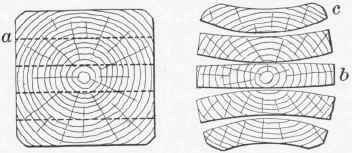outofstepper
ArboristSite Lurker
So now that I've got a small CSM built, its time to start doing damage. 
My intention so far is to just start slabbing. Pick a log that'll fit in my
mill and just start slabbing my way through to the bottom.
Thing is, I'm not sure this is the best way to do it. Meaning, will I get
the "best boards" this way?
Plan is to square them up once they're dry.. on a table saw.. so I'm not
worried about final dimensions just yet.
But I don't know enough about wood to know what the "choice cuts" are.
If I cut a 1.5" x 15" board out of the center, including the pith, will it be
any good?
Does just cutting slabs waste wood? should I be turning and flipping the
log? Should I split it two?
Maybe the answers to all these questions are "it depends" -- but if anyone
can shed some light on things to avoid, I'd appreciate it.
The end goal is nice clean strong boards for wood working.
Thanks!
My intention so far is to just start slabbing. Pick a log that'll fit in my
mill and just start slabbing my way through to the bottom.
Thing is, I'm not sure this is the best way to do it. Meaning, will I get
the "best boards" this way?
Plan is to square them up once they're dry.. on a table saw.. so I'm not
worried about final dimensions just yet.
But I don't know enough about wood to know what the "choice cuts" are.
If I cut a 1.5" x 15" board out of the center, including the pith, will it be
any good?
Does just cutting slabs waste wood? should I be turning and flipping the
log? Should I split it two?
Maybe the answers to all these questions are "it depends" -- but if anyone
can shed some light on things to avoid, I'd appreciate it.
The end goal is nice clean strong boards for wood working.
Thanks!



























































